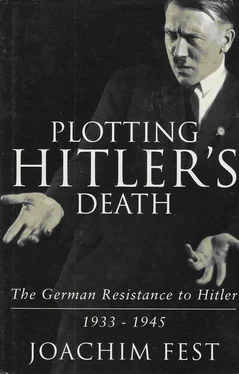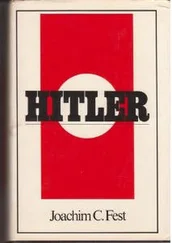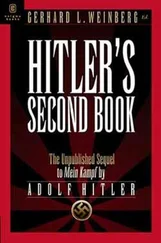By this time Goerdeler had indisputably become the central figure in the civilian opposition. Although he was always surrounded by some controversy, he had established over the years an extensive network of like-minded friends, including business people, government officials, professors, clergymen, and labor leaders. To be sure, individual members who objected to his “open risk taking” or, like Julius Leber, to his “illusions” about foreign policy, were always dropping out of the network. Others were put off by his peculiar combination of antimodernism and social progressiveness, practicality and naive idealism. Generally, though, Goerdeler managed to conciliate the many sharp differences of opinion within the network and succeeded in steadily increasing its members.
As a result Goerdeler was unanimously considered not only the hub of the civilian opposition but its driving force as well; he pushed ahead tirelessly, insisting on action and fostering confidence among the conspirators. In the end it was his indomitable spirit in the face of any adversity that most distinguished him from his associates, who were prone to feelings of hopelessness and dejection. It is still hard to say whether his curiously restricted view of people and the world around him stemmed from his ability to reduce problems to their most basic terms, a skill that all his associates found praiseworthy, or from the natural simplicity of a man who trusted all too readily that reason would ultimately prevail. Many saw in the former mayor of Leipzig a strange combination of city-hall pragmatism and Prussian enlightenment, seldom encountered in such arid purity. Darker, more complex phenomena were beyond his comprehension. The philosopher Theodor Litt, who was teaching in Leipzig at the time and had contacts with the Goerdeler group, remarked: “Goerdeler was a clear-headed, decent, straightforward kind of man who had very little or nothing about him that was somber, unresolved, or enigmatic. He therefore assumed that his fellow human beings needed only enlightenment and well-meaning moral instruction to overcome the error of their ways… . The eerie tangle of good and evil, the seductive ambivalence of certain kinds of mental gifts, the power of unacknowledged prejudices and secret desires, the entire shadowy area in which the inner lives of so many are played out-there was no room for any of this in his view of humanity.” 11
Even before the victory over France, Goerdeler had quickly turned out a series of memoranda for his colleagues from which he then distilled a coherent overview of the positive aims of the resistance. The outline of the new order that resulted from this effort, entitled “The Aims,” was finished in early 1941 and reflected not only his own ideas but, even more important, those that emerged in the course of comprehensive discussions with Beck; Johannes Popitz, the Prussian minister of finance; former trade union leaders such as Wilhelm Leuschner and Jakob Kaiser; and many others. Later Goerdeler also drew on a group of Freiburg professors, including Walter Eucken, Constantin von Dietze, and Adolf Lampe, the founders of the social market economy, as well as historian Gerhard Ritter and others, who had come together out of disgust for the regime after Kristallnacht. To understand the political aims of the conservative resistance, one must also consider a draft of a constitution produced in early 1940, apparently under the leadership of Ulrich von Hassell and Johannes Popitz, which had an unmistakable authoritarian and statist cast and from which Goerdeler in all likelihood distanced himself. There were always clashes and shifts of opinions within these constantly changing opposition circles, which were only labeled a “group” in retrospect. Even among national-conservative opponents of the regime, there existed a broad range of thoughts and ideas about the new order that would emerge. This so-called group was therefore much more heterogeneous and riven by contradiction and contrast than a simplifying label would suggest. 12

Despite their clashing views, however, all the opposition groups, the conservative “notables” to the various left-wing factions, were indelibly marked by their common experience of the totalitarian dictatorship that erupted in the midst of the democracy of Weimar and by the inability of the political parties, whether on the left or the right, to deal with this disaster. Virtually all opposition circles tended to blame this breakdown on the unyielding antagonism among the parties, which was played out in terms of nineteenth-century slogans and popular platitudes that no longer bore a resemblance to reality. The opponents of the Nazis turned their attention to the structures that had encouraged this disunity. Sweeping critiques of modern civilization had long been fashionable in Germany, and they certainly played a role as well, with their indictments of “mass society,” “urbanization,” the original sin of “secularization,” and the spreading “materialism” that undermined all sense of higher purpose. The fact that even Dietrich Bonhoeffer, who certainly did not move in conservative circles, spoke of a “trend toward mob tastes at all social levels” demonstrates the prevalence of the aversion to modernity implicit in these critiques. 13Like most other people of his political persuasion, he interpreted National Socialism as an expression, albeit an extreme one, of such modernist tendencies.
Virtually all the internal opponents of Nazism believed that it had originated in the miseries of the Weimar Republic. Even former supporters of democracy were convinced that Germany must dispense with political systems based on parties and adopt instead a rigidly structured, if not authoritarian regime. In their search for a minimal political and moral consensus, without which they believed no state could survive, they frequently flirted with Utopian, “conflict-free” notions that were disturbingly reminiscent of the Nazis’ own ideology of a “people’s community.” Yet wherever their ideas led them, the members of these civilian opposition groups were united in their desire to bring the Nazi tyranny to a quick end and to reorganize social and political life from top to bottom.
Much criticism has been directed at the German resistance’s persistent skepticism toward democracy, its desire to return to older ethical systems and human values that were eternally valid and only in need of a contemporary form of expression. Hannah Arendt, for instance, saw the German resistance as nothing more than a continuation of the antidemocratic opposition to the Weimar Republic. After the collapse of the republic, which was, she stated, partially brought on by their efforts, resistance leaders paradoxically invoked Hitler as well, in order to advance what Arendt viewed as their own reactionary objectives. Others have seen a connection between the resistance and the so-called conservative revolution, that restless movement of radical intellectuals from all sides of society who were united only in their distaste for the democratic order. 14
It is true that resistance groups of all kinds, and not just national conservatives, considered the “Weimar experiment” a hopeless failure and basically differed only in the conclusions they drew from it. Significantly, there was not a single well-known proponent of the defunct republic in these various circles despite the profusion of views their members held. 15It would be historically inaccurate to pin the resistance down to this initial position. Close examination reveals numerous conflicts, some of them never resolved, and continuous confrontations that led to fresh insights. The resistance was neither static nor monolithic. Its peculiarity and perhaps even its glory lay in the openness and intellectual ferment it created as its members moved, often with much soul searching, from their original views, which tended to be narrow and highly conditioned by a particular social and political background, to broader visions.
Читать дальше





![Traudl Junge - Hitler's Last Secretary - A Firsthand Account of Life with Hitler [aka Until the Final Hour]](/books/416681/traudl-junge-hitler-s-last-secretary-a-firsthand-thumb.webp)







